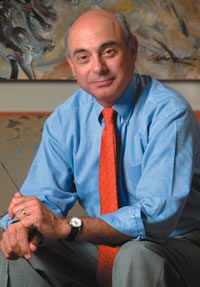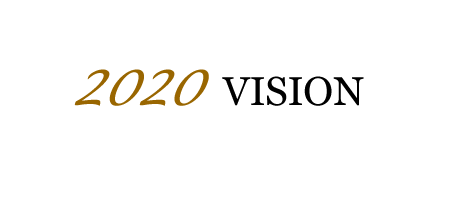From the director

Michael M.E. Johns


We will focus on the individual, with an orientation toward fitness, wellness, and preventive and regenerative medicine that will apply to whole populations.


In this issue
From the director / LettersMed-morphosis
Burden of proof
Big Idea:
Regenerative Medicine
Moving forward
Noteworthy
On Point:
Smallpox, big risks?

What should the Woodruff Health Sciences Center (WHSC) look like in 2020?
How can we build on our distinctive strengths - our history, our culture,
our strategic positioning, and our location in Atlanta - to become a model
that other academic health centers will emulate?
To reach our potential over the next 15 to 20 years, we will have to travel difficult terrain. We find ourselves in a fragmented, disconnected health care system (if we can call it a system), with costs rising too fast to be long sustained by our payers and our public. In addition to accelerating financial strains, this system is trying to adapt to a rapidly changing demographic base. Our population is aging and diversifying. The number of people without health insurance is growing. Health disparities associated with income and ethnicity persist. There is still a striking gap between knowledge and action when personal or community wellness is at stake. For instance, while cigarette smoking has declined in the past several decades, obesity and sedentary lifestyles have grown as threats to the nation's health.
At the same time, we have seen an explosion in the widespread availability of health information and information technologies. Today, a motivated consumer with access to the Internet can overwhelm a doctor with studies, trials, and theories. In health care, as in every other sector, we need to respond to a seemingly insatiable public demand for better access, more choice, and the latest in technologies and products. At the same time, we need to develop new strategies to motivate healthier behaviors and to support healthier families and communities.
Crucially, this is a time of extraordinary progress in scientific discovery and clinical innovation that promises tools to change both personal health care and the care of populations in ways we can only begin to imagine. At Emory, we are engaged in path-breaking work in key fields, including genetics, infectious disease and vaccine development, bioinformatics, transplantation, vascular biology, the neurosciences, musculoskeletal disease, chronic disease, and aging. Innovators in medicine, nursing, public health, and other fields are giving us new tools for a new century of medicine that will feature preventive, regenerative, and holistic care.
In this context, we have an extraordinary opportunity to bring our pioneering discovery and innovation together through new educational, research, and clinical structures so that by the year 2020, we can create a model system of health and healing for the 21st century.
How should we organize ourselves to accomplish all of this? Over the next 20 years, our care, education, and research must converge to supplement the current predominantly acute care model with new capabilities for preventive and regenerative care for both individual patients and whole populations.
This might take on the form, for instance, of a hub and spoke organization, where the hub would contain the core facilities of an acute care hospital and provide the interdisciplinary basis for treating complex and chronic diseases and for collaborating across care teams. Care teams would have seamless access to outpatient and ambulatory facilities, inpatient beds and ICUs, and translational research laboratories. Flowing between the central hub and the teams would be groundbreaking research, integrated with comprehensive new approaches to nursing, healing, and public health.
This model would focus on the individual but would apply to whole populations in supplementing interventional treatment with fitness, wellness, and preventive and regenerative medicine. It would leverage our new understanding of genomics and our growing mastery of bioinformatics into the ability to practice truly preemptive medicine for the first time in human history. We would have far greater capacity to evaluate the outcomes of our work, generate new questions, fuel our research, and then use this data to correct and improve our efforts. We would use a technology platform -- a vast, nimble database to be shared by health professionals, scientists, and patients and their families, according to their levels of need and understanding.
Any vision of the future of the WHSC must factor in the competitive marketplace for health care services. We must differentiate our services and capabilities and compete efficiently and effectively. At Emory, we have the ability, which is unique in Atlanta and perhaps in our region, to leverage our resources as a major research university. We can bring the tools of social science together with our extraordinary capabilities in basic and clinical research and in nursing and public health. We can take the most comprehensive clinical delivery system in Georgia and provide world-class care that is sensitive to the life-stage, gender, ethnicity, and community context of each patient. With the best information systems, services, and care, we can find innovative, cost-effective, and competitive approaches to the health care marketplace. And building on our ties to the Carter Center, the CDC, and major volunteer organizations such as the American Cancer Society, we can make Emory a leader in offering wellness and health maintenance solutions for populations and communities.
The closest model we have to this now in American health care is the National Cancer Institutedesignated comprehensive cancer center. In our own Winship Cancer Institute, faculty and staff are working to bring discovery research together with the latest epidemiologic, biomedical, and information technologies. By so doing, we will be able to customize therapies, infused with humane, patient-centered care, which can be applied across populations. In addition to cancer, comprehensive thematic centers and care teams could be created in areas such as these:
- Heart, stroke and vascular disease
- Disorders of the mind, brain, and special senses
- Transplantation and regeneration
- Musculoskeletal disorders
- Infectious diseases
- Chronic diseases
- Other areas of strength
Refining, elaborating, and achieving this vision will require the input and dedication of faculty, staff, students, and friends of the WHSC. I invite your input and urge your dedication to this project.
Michael M.E. Johns
Copyright © Emory University, 2003. All Rights Reserved.
Send comments to the Editors.
Web version by Jaime Henriquez.